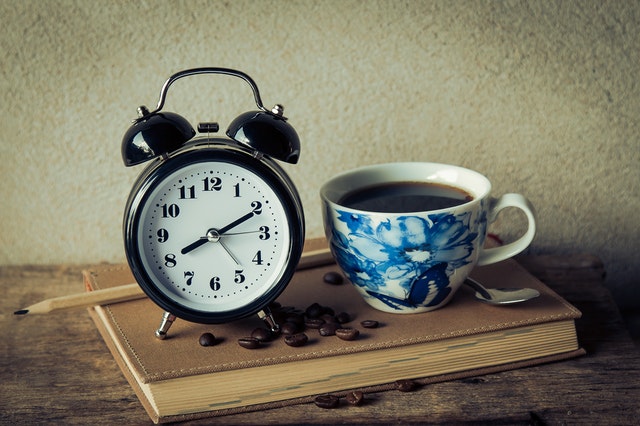Coffee Mistakes Most People Make
On paper, making your own coffee at home sounds fantastic. You save money, get to use your fancy reusable travel mug, and avoid the Starbucks drive-thru wait in the morning while you’re rushing to work. However, for many individuals, the coffee that comes out of their coffee pots in the morning pales in comparison to the coffee they’d have from their favorite neighborhood coffee shop. Given its pervasiveness in our daily lives, coffee may seem to be the simplest thing in the world to prepare, yet many individuals are chomping down bitter, greasy coffee every morning, foregoing the delights of a well-brewed cup of Joe in favor of a simply utilitarian, joyless shot of caffeine. We are entitled to better.
There’s no need to be embarrassed the next time you need to pull a coffee grind out of your teeth quietly – producing a decent cup of coffee is an art. When you’re sick of your own brew, there’s a reason you’ll spend $6 for a coffee from your favorite café. However, if you want to go out into the wild world of coffee manufacturing, you’ll need to first identify some of the most frequent coffee blunders you’re undoubtedly doing at home.
Using the microwave to reheat your coffee
This is a scenario with which far too many busy individuals are all too acquainted. You’re at home or at work, and you’ve just brewed a cup of coffee, fully expecting to start drinking it as soon as it’s ready. But it feels like a thousand important jobs pop up in the period between when the coffee begins brewing and when it’s ready to consume. Your coffee lies there, cold and unappealing, for the next several minutes. If you’re like most people, you’ll simply pop it in the microwave to bring it to that ideal, piping-hot temperature.
However, if you want your coffee to taste decent, this is a catastrophe waiting to happen. You should consume your coffee as soon as it’s ready, if possible. The longer you let coffee out, the bitterer it becomes. When you consider that warming coffee makes your cup of Joe even more bitter, it’s easy to understand why you should consume your coffee as soon as possible. If you often find your coffee becoming cold, instead of putting it in the microwave, you may want to invest in a quality thermal mug.
Purchasing coffee of poor quality
Wine connoisseurs have been around for a long time, and craft beer fans have taken over almost every city and suburban pub in the nation. A real coffee aficionado, on the other hand, is still a somewhat uncommon breed. Most of us aren’t aware of what distinguishes a great cup of coffee from a decent or even average one. If you don’t like the flavor of your coffee, it’s possible that you’re purchasing low-quality beans.
You’re aiming for the proper balance of acidity, bitterness, and sweetness in every sip when it comes to flavor. If you’re fresh to the realm of fine coffee, though, your taste buds may not have have developed that sense. Don’t be concerned; it will arrive. In the meanwhile, what’s a better method to identify whether you’ve got a good bean or not? Some of the beans should be ground and spooned on top of a glass of cold water. After a few minutes, the color of a high-quality brew should not bleed into the water, but a lower-quality coffee ground would.
Using coffee beans that are old or stale
Even if you know exactly what you’re looking for in a high-quality bean and roast, you might still be making a mistake in the bean area. The freshness of the beans contributes significantly to the flavor of a good cup of coffee. You won’t get the greatest taste if you don’t start with a fresh bean. You may believe that you can store coffee beans in your cabinet for months without losing any of their taste, but this is just not the case.
In fact, if you don’t take precautions to keep your newly roasted beans fresh, they may only last a week to a month before going bad and losing their flavor. This is a complete waste of money if you had purchased higher-quality beans. The most essential thing to remember while storing coffee beans is to keep them out of direct sunlight and in airtight containers to avoid oxidation. If you’re fortunate, your coffee will arrive in a valved pack; all you have to do now is make sure it’s well sealed. If you don’t have one, you can always buy a cheap airtight container to keep your beans in.
Using coffee grinds rather than whole beans
When you go to the grocery shop or market to get your next bag of coffee, you have to decide whether to get the beans or the grounds. Listen, we get the allure of purchasing land. You won’t need to buy a loud coffee grinder, and you’ll have one less step between you and your coffee when you’re groggy from a night’s sleep and brewing your first cup of the day. But bear with us: Ground beans are considerably inferior than whole beans.
Whole beans will not only keep fresher for longer, minimizing the chances of ending up with a complete bag of stale coffee, but they will also taste (and smell) better. Yes, it takes a little longer to create, but think of those additional 30 seconds of grinding as well-deserved self-care time. If you don’t already have a coffee grinder, now is an excellent time to get one.
brewing your coffee using low-quality water
When it comes to making a nice cup of coffee, water is probably not the first element that comes to mind. It’s all about the bean, if you’re like most people. However, given that an average cup of coffee contains 98.75 percent water, it makes sense to consider the quality of the water you use. Although tap water seems to be an easy option, the quality of tap water varies greatly depending on where you live, so you may not be getting the greatest cup of coffee possible if you use H2O directly from the faucet.
If you have access to it, filtered water is a preferable choice. You can acquire this from a refrigerator filter or, if you have one, a sink filter. You can always use a pitcher filter if you don’t have one. You’ll have better-tasting water to make your coffee if you remember to fill it up the night before. You may also use bottled water if you don’t mind the additional trash, albeit it isn’t the most ecologically responsible alternative.
When brewing coffee, using water that is too hot or too cold
When it comes to brewing the ideal cup of coffee, you must consider not just the quality but also the temperature of the water you’re using. The temperature you choose for your coffee will be determined by the technique you use to prepare it. Are you making coffee using a drip machine? If that’s the case, you’ll need to add some cold water. Most coffee makers presume you’re beginning with cold water and adjust the temperature appropriately.
If you’re using a French press, though, you’ll need to be a little more cautious with the water temperature. Of course, you must heat your water, but far too many people believe they must boil it before pouring it over the coffee grounds. But that’s a massive no-no. The recommended water temperature for your French press is 195°F, which is just below boiling. If it gets much hotter, the coffee will burn. Invest in a kitchen thermometer if you want to be particularly precise with your water temperature.
Using the incorrect coffee cup
When you’re attempting to create a better cup of coffee, questioning the quality of your beans or coffee machine seems sensible. But have you ever considered that the cup you drink from may make a significant difference? This may not be an issue for you if you’re sipping an iced coffee. However, if you want your coffee to be as hot as possible, you should avoid thin-walled and generally fragile mugs and cups. The heat is easily dissipated in these containers. So, in minutes, you may go from a steaming cup of Joe to something less appealing and more room temperature.
What is the solution? Use a coffee cup with a thick wall, like those seen in old-school restaurants. A handmade ceramic mug with strong walls might also be appropriate. If you’re the kind who’s constantly on the move, investing in a high-quality travel mug will allow you to carry your hot coffee with you to the workplace or wherever you’re going for the day.
Not cleaning your coffee machine on a regular basis
Every day, your coffee maker performs so many tasks for you that you wouldn’t be able to leave the house without it. Even still, if you’re like most people, your coffee maker sits neglected at home every day, screaming to be cleaned. Contrary to common perception, it is necessary to clean your coffee machine on a regular basis. Coffee makers, on average, are the sixth germiest object in your kitchen and bathroom, even germier than the handle on your bathroom faucet.
As a result, it’s critical to clean your equipment on a regular basis. The frequency of this may vary depending on the kind of coffee machine you’re using. Every time you use a French press, you’ll have to clean it. A drip coffee machine, on the other hand, should be cleaned at least once a month. Cleaning a bit more often than is required will not harm you and will guarantee that your coffee tastes as nice as it possibly can.
There is just one way to make coffee.
In our whole lives, many of us have only ever prepared coffee one way. Maybe you’ve only ever used a drip coffee maker, or maybe you’ve had a Keurig for as long as you’ve been drinking coffee (or as long as they’ve been around). But here’s the thing: you won’t know whether you’re losing out on a superior way unless you give the others a go.
A drip coffee maker, which is what most people have in their homes, is perhaps the most known to you. They’re simple to use and can brew large quantities of coffee at once. This procedure may not provide the greatest results in terms of flavor.
ALSO READ—-6 DISADVANTAGES OF COFFEE FOR YOUR HEALTH AND 12 BENEFITS- The Origins of CoffeeYour most familiar kind of coffee maker is probably a drip coffee maker since that’s what the majority of people have in their kitchens. You can make large amounts of coffee with ease, and they are simple and straightforward to use. This procedure, on the other hand, may not provide the optimum flavor. Pour over coffee, a moka pot, or an Aeropress are all choices to consider if you’re eager to try something new. A minor difference exists in the flavor of each of these coffee-making procedures. Each person has a preferred technique of brewing their coffee; thus, if you’re looking for the ideal cup of home-brewed coffee, don’t be hesitant to experiment with various brewing methods.
Making coffee beans ahead of time might save you a lot of time!
Beans, rather than ground coffee, are preferred by coffee connoisseurs because they just taste better. While you may appreciate the convenience of pre-ground coffee, it is possible that you may prefer to grind your own. When you’re preparing your first pot of coffee in the morning, it’s simply one less thing for you to worry about. Accordingly, it may seem that it would be beneficial to pre-grind your coffee beans in advance so that you may get a head start on your day.
You should avoid this method if you truly want to enjoy a fresh flavor. As an alternative, it is preferable to ground your beans just before you boil them.. Oxidation is a chemical reaction that occurs when coffee grounds are exposed to air for an extended period of time. This enables some of the lovely scents to escape from your coffee, leaving you with a cup of coffee that is insipid or even stale. Sometimes, time dictates that you pre-grind, and this is the case. For those who truly want to enjoy a cup of coffee on a lazy morning, take your time to grind your beans just before you put on your coffee maker.
making single-serve coffee in a single-serve coffee maker
Those who aren’t already proficient in the art of coffee-making and who have walked away from their morning mug with a smirk on their face more than a few times may like to explore the pricey, but luxurious, world of the single-cup coffee maker. Consider the Keurig or any of its copycat relatives as an example of this. There is substance to their argument: The process is quick and easy; there is no measurement, no grinding, and no waiting involved. Nothing more than a single cup of coffee, available whenever you are. That is a fantastic concept in theory. In reality, though, what does this mean? That’s not the case at all!
Of course, you’re already aware that K-Cups and other single-serve coffee pods are detrimental to the environment, right? Obviously, wasting this much plastic on a daily basis will have a bad influence on the environment’s health, but this isn’t news to anybody. In addition, these sorts of coffee machines, as well as the pods that are required to fill them, might be prohibitively costly in certain cases. Even with these drawbacks, if the coffee is the greatest you’ve ever tasted, it could be worth it to you. Warning: This is not the case. It’s true that pod coffee isn’t that great, mostly because the pre-ground coffee is likely already stale by the time it reaches you. Due to the several additional variables that might contribute to substandard coffee produced by a single-cup coffee maker, you may want to avoid adopting this method of brewing coffee in your search for the ideal cup.
Incorrect coffee grind for your coffee-making technique
By experimenting with different brewing techniques, you’ll be well on your way to creating better coffee at home in the near future! While it comes to brewing excellent home brew, it’s crucial to remember that each coffee-making technique requires a different grind, so keep that in mind when getting started. In order to use certain procedures, you’ll require a super-fine grind, such as in the case of When making Turkish coffee, you’ll need a particular coffee grinder, which might be tough to come by in certain regions. Using a French press, on the other hand, demands the polar opposite: a coarse grind is essential for the best results.
Anyone serious about raising their coffee game to a higher level should investigate a variety of different grinders for their various coffee-related tasks. The majority of us, on the other hand, are satisfied with selecting a single grinder that compliments the brewing process we typically use. One of the most critical stages in producing the perfect cup of coffee is to do a little research to find the appropriate grind for your coffee machine.
When your coffee does not taste nice, you should drink it anyhow.
Too many people don’t actually appreciate the coffee they’re brewing every morning, but since it’s all they’ve ever known, they get out of bed and repeat the same routine over and again. It’s possible that they don’t care to measure how much coffee they’re consuming, or that the water they use is too hot if they do. No matter what the problem is, they aren’t willing to acknowledge it. The fact that they don’t recognize they have the ability to change and learn how to prepare a genuinely great cup of coffee is even more significant.
If you force yourself to drink coffee that you don’t appreciate every morning in the idea that it’s the best you can do, you are doing yourself a disservice. Not another trip to Starbucks will solve the problem. Make it a point to attempt something new instead of being afraid. What is your go-to method for making coffee? Instead, use a drip coffee machine to brew your cup of coffee. Purchase the same, low-cost bag of coffee on a consistent basis. Opt for something a little more exciting and tasty. You are not obligated to continue to use the same formula if it is not providing you with the outcomes you want.





